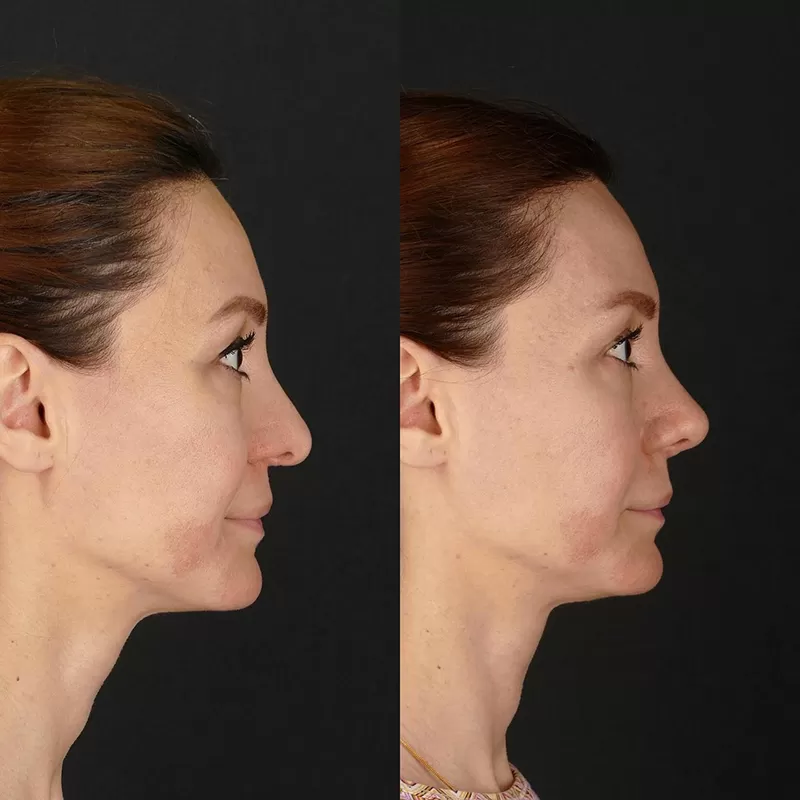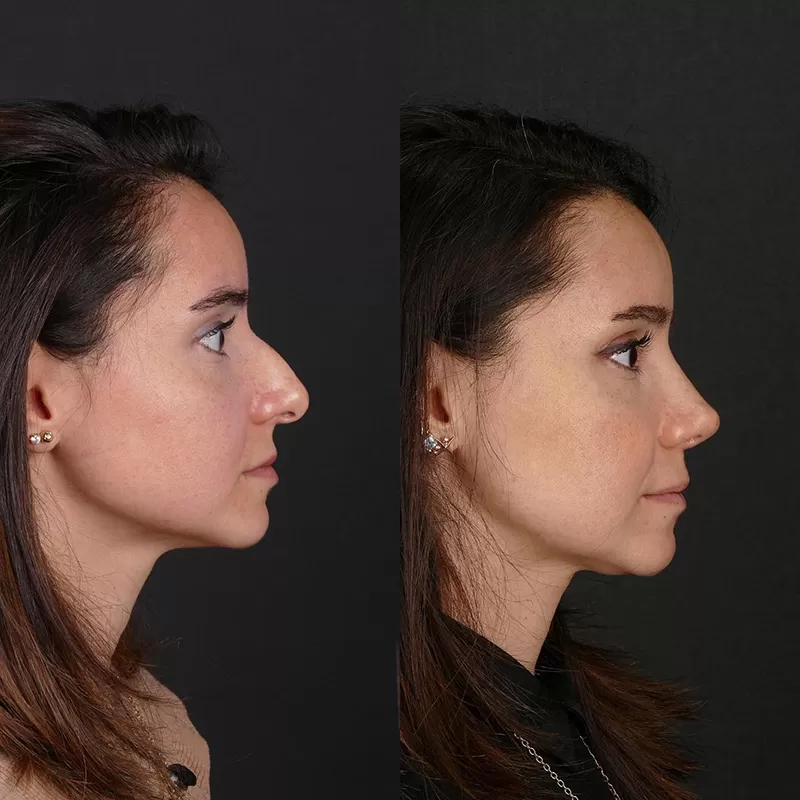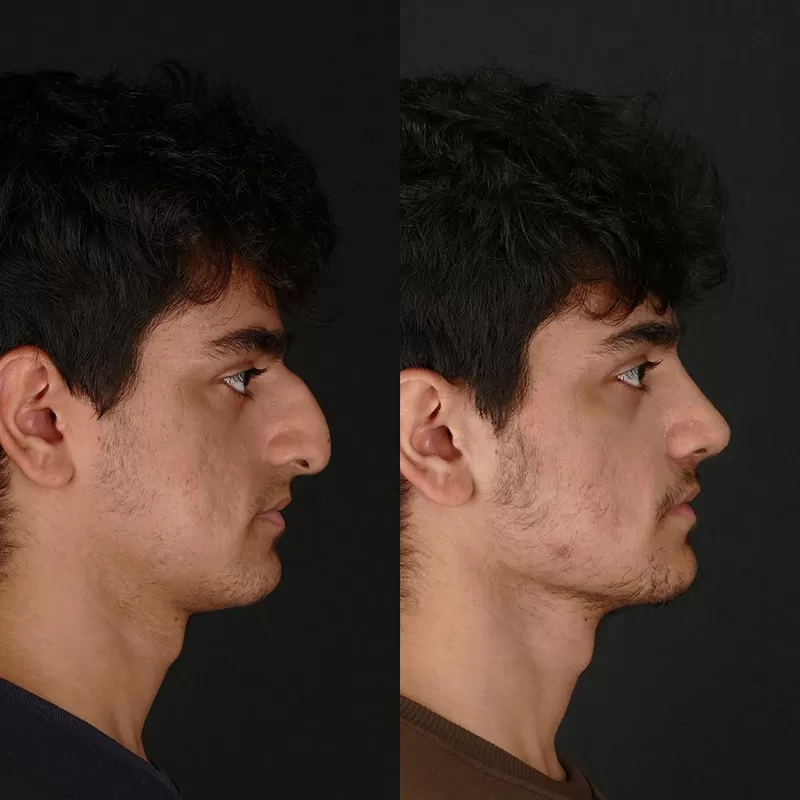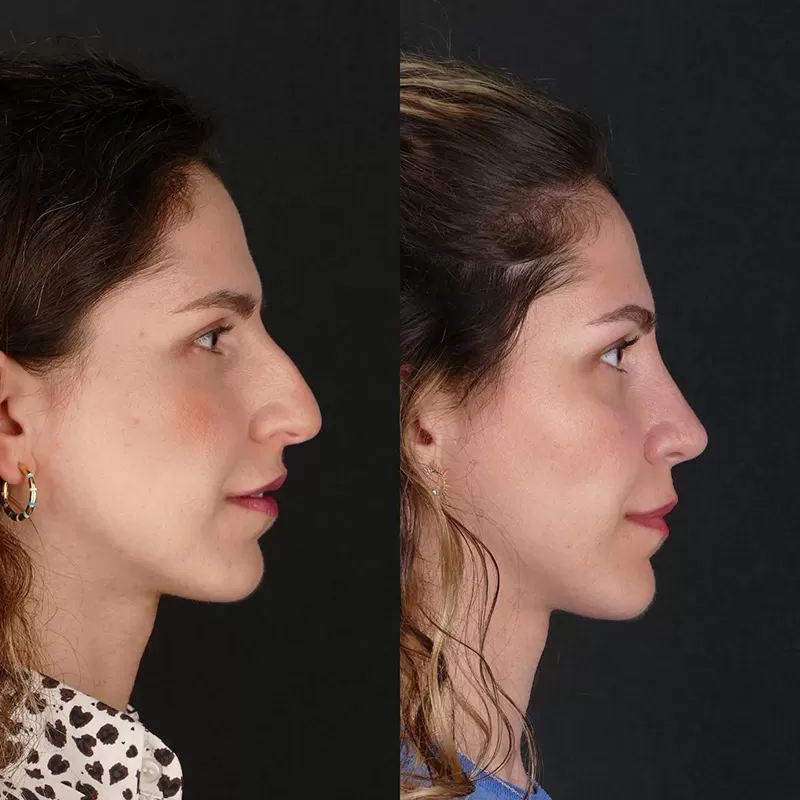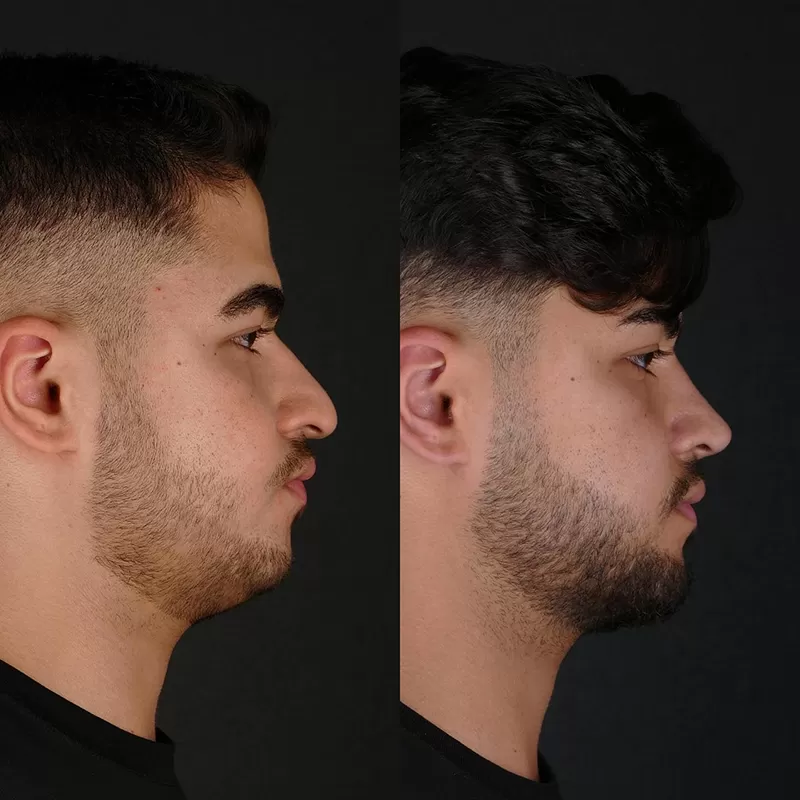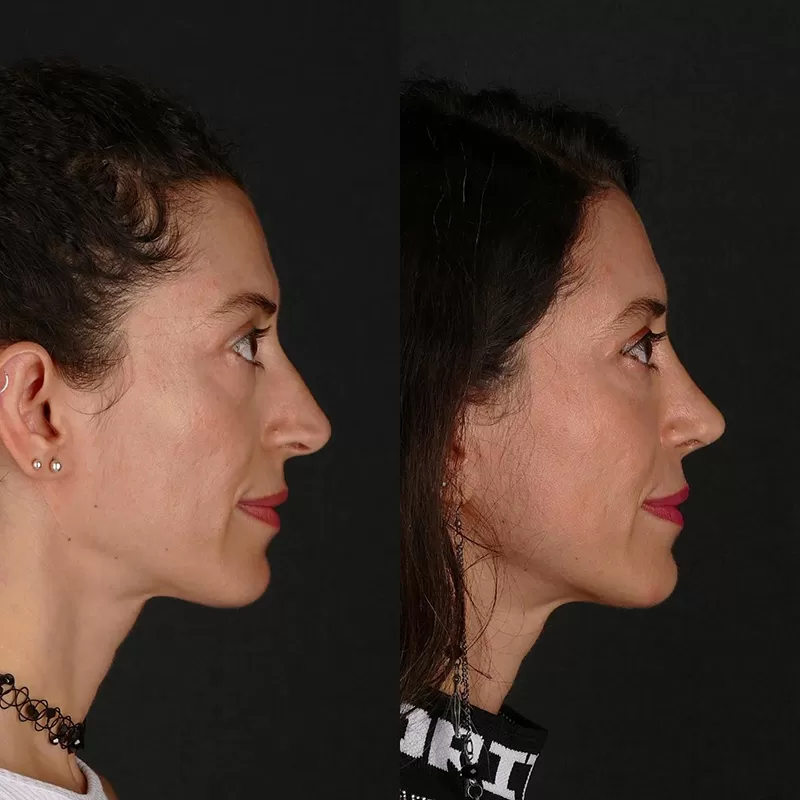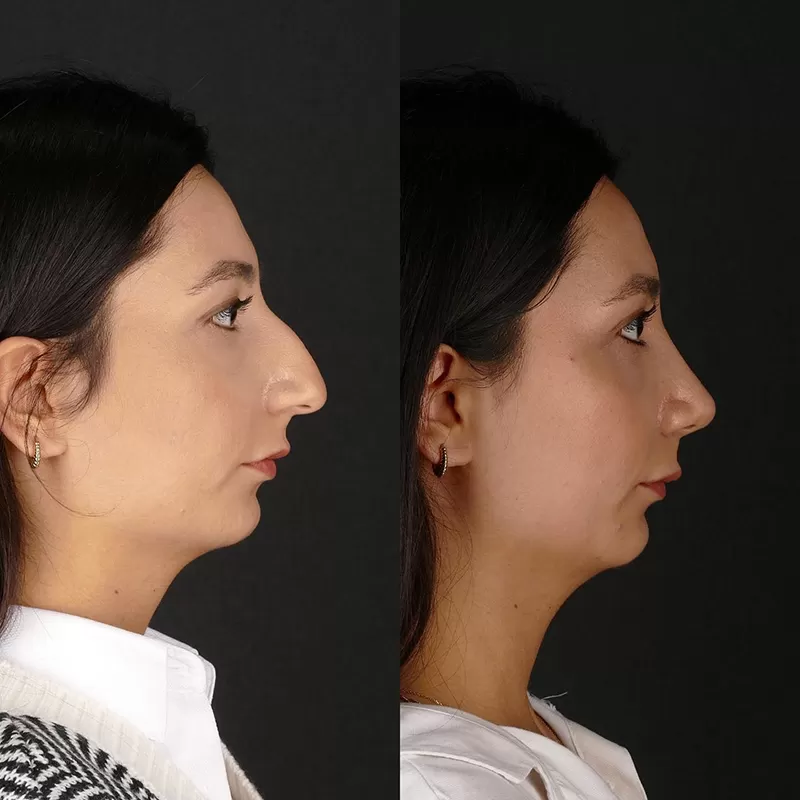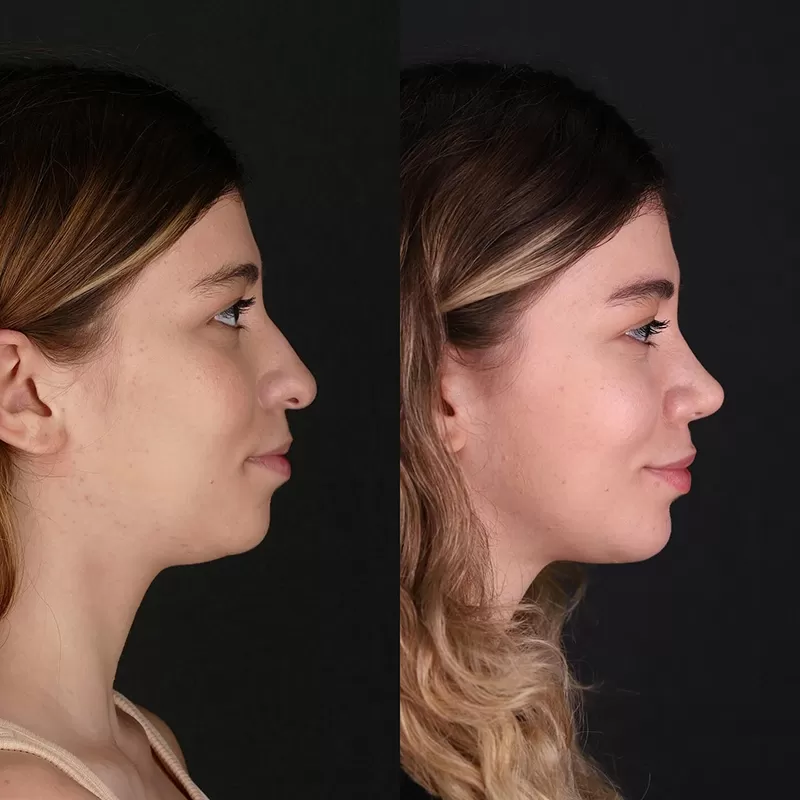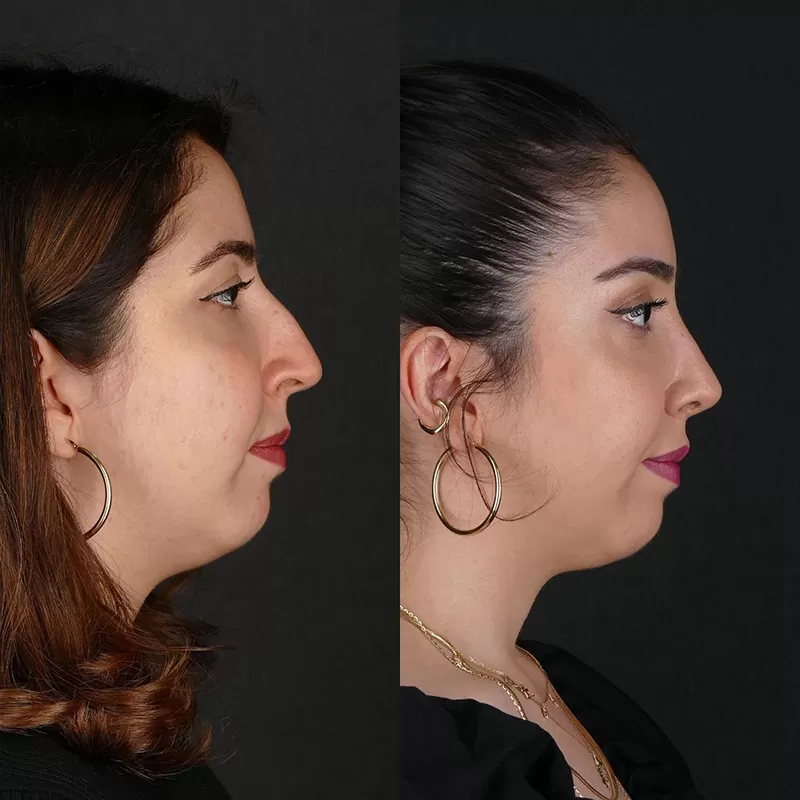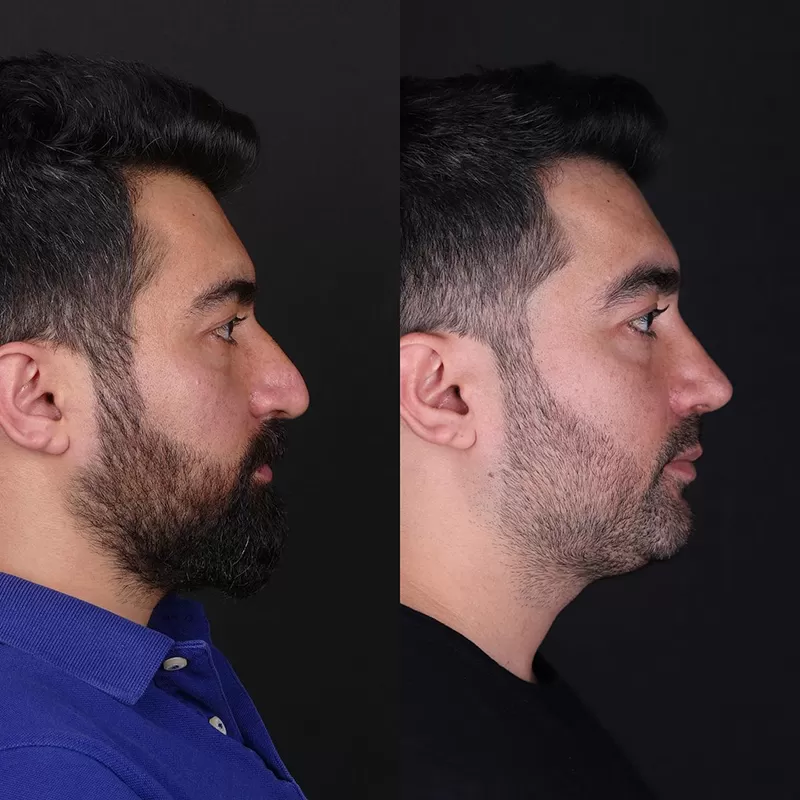Closed Rhinoplasty
İçindekiler
ToggleWhat is Closed Rhinoplasty?
The medical term rhinoplasty, which is a combination of the words rino (nose) and plasti (to give shape or form), means “shaping the nose” and “nose aesthetics”.
In rhinoplasty surgeries, which are known by the general name of rhinoplasty; Two different techniques are used as “Closed” and “Open”. In open rhinoplasty; The operation is performed by cutting the area between the nostrils in the shape of “Λ” at the tip of the nose. In closed rhinoplasty, the intervention is performed by entering through the nostrils without cutting the tip of the nose, and the incision procedures are performed completely inside the nose.

Although open rhinoplasty is more effortless in terms of surgical intervention due to its openness of vision, the scar left after surgery gives away the aesthetic surgery performed. Although closed rhinoplasty is a difficult technique, it does not leave any scars outside the nose due to the fact that the entire intervention is performed from inside the nose, and protects the vessels, nerves and ligaments coming to the tip of the nose.
Before rhinoplasty surgery, the patient’s image is taken and the planning of the intervention to be performed is made using two-dimensional simulations in the light of the patient’s demands and the doctor’s requirements. Although the duration varies according to the physiological problem in the nose and the planned changes, the operation is completed in approximately 3-4 hours. The operation is performed under general anaesthesia. After the intervention, the patient is discharged from the hospital on the same day or the next day, depending on the patient’s condition.
TREATMENT PROCESS
Closed Rhinoplasty
1 Session
10 Days
Lifetime
2.5 hours
10 days later
General Anaesthesia
20 Days
In Which Situations Should Nose Aesthetics Be Performed?
Rhinoplasty is a solution for people who are dissatisfied with the shape, appearance or size of their nose, but it is also a preferred surgical intervention method to improve the nasal functions of people with injuries and deformations or to provide healthy solutions to people with respiratory problems. The general purpose of the intervention is to renew the functionality and appearance of the nose, taking into account the facial structure, skin type and texture.
In general, the most common rhinoplasty requests are the elimination of breathing difficulties and the resulting sleep disorders, reduction of the size of the nose, shortening the length of the nose, correction of the size and shape of the nostrils, correction of the arched nose, correction of the asymmetrical appearance, reshaping of the tip of the nose.
Rhinoplasty surgeries performed as a result of aesthetic demands are mostly due to personal preferences. There are people who have a disproportionate and ugly nose according to general acceptance and are satisfied with their appearance, as well as people who want to have a different appearance despite having a normal-looking nose. As a result, rhinoplasty surgeries are common operations performed due to physiological health problems or personal preferences.
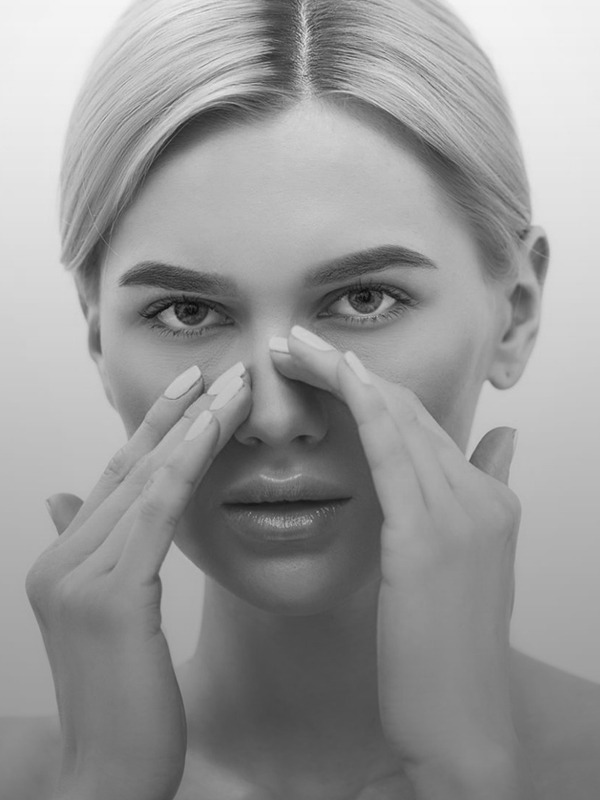
What is the Recovery Time After Closed Rhinoplasty?
Following discharge on the day of the operation or the following day, silicone splints are removed two or three days later. At the end of this period, a shower can be taken, washing only the body without wetting the head area. The splints placed on the nose are removed within a week and the tapes are attached. Normal showers can be taken during this period. The tapes are removed on the tenth day. In closed rhinoplasty; the stitches placed inside the nose fall out on their own within 15-20 days. You can swim in the pool or sea 15 days after the operation. Then the control process, which will be carried out by the doctor, begins.
There is no restriction on eating or drinking after the second day. On the tenth day, the tape and splints are removed and normal daily life is resumed and the patient can board a plane. As long as the bruising under the eyes or on the upper eyelids has not disappeared, do not go out in the sun, and if you have to, you should definitely use a hat. However, glasses should not be used for at least 2 months. This period may be extended to 6 months depending on the situation.

